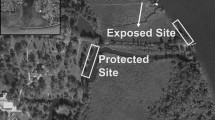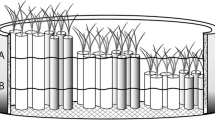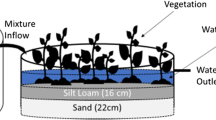In the late 1980s and early 1990s, the major question being asked about the Everglades was: What concentration of phosphorus could be added to the ecosystem without resulting in an imbalance of flora and fauna? While ecological studies had been undertaken along known P gradients in areas like Water Conservation 2A (Koch and Reddy 1992; Craft and Richardson 1993b) it was also clear that the ecological responses along this gradient were also influenced by other nutrient additions, including Na, Ca, N, and S; thus, the shifts in species and changes in water and soil chemistry could not be totally attributed to P additions. Moreover, it became essential to determine if a P threshold existed in the Everglades, i.e., to determine at what total P (TP) concentration significant shifts in ecosystem structure and function occurred. This chapter outlines the design, construction, and operational features of a replicated dosing system created to establish a gradient of known water TP concentrations. Importantly, the dosing facility site was selected from among many sites tested for uniform low background concentrations of TP. The final selection of the two replicate undisturbed site locations in the lower part of WCA-2A was based on sites with uniform slough species distributions, low P concentrations (< 400 mg kg−1 TP) in the soil, and TP background water concentrations of ≈10µg L−1 TP. Importantly, the dosing site was allowed to equilibrate from construction effects for 9 months prior to dosing trials. Test trials on the system were run to provide information on improving system water pumping efficiency and consistency as well as uniform phosphorus distributions and concentrations in the water column prior to the commencement of the 6-year P dosing experiment (1993–1998).
Access this chapter
Tax calculation will be finalised at checkout
Purchases are for personal use only
Preview
Unable to display preview. Download preview PDF.
Similar content being viewed by others
Author information
Authors and Affiliations
Rights and permissions
Copyright information
© 2008 Springer Science+Business Media, LLC
About this chapter
Cite this chapter
Richardson, C.J., Johnson, R.R. (2008). Introduction to a Mesocosm Approach for Establishment of Phosphorus Gradient Experiments. In: Everglades Experiments. Ecological Studies, vol 201. Springer, New York, NY. https://doi.org/10.1007/978-0-387-68923-4_14
Download citation
DOI: https://doi.org/10.1007/978-0-387-68923-4_14
Publisher Name: Springer, New York, NY
Print ISBN: 978-0-387-98796-5
Online ISBN: 978-0-387-68923-4
eBook Packages: Biomedical and Life SciencesBiomedical and Life Sciences (R0)




